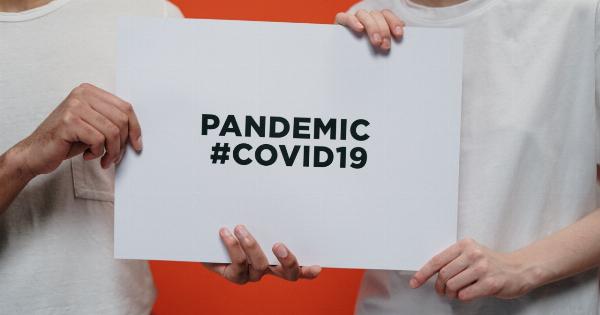The troop mentality or groupthink refers to the tendency for individuals to conform to group dynamics and pressure, leading to negative behaviors such as prejudice, discrimination, and irrational decision-making.
The troop mentality can lead to harm to oneself or others, such as in hazing, bullying, and mob violence. At the same time, it can also lead to positive behaviors, such as social support, teamwork, and shared values.
To combat negative behaviors resulting from the troop mentality, it is important to understand its underlying mechanisms and to develop strategies to counteract it.
This guide will explore the troop mentality in depth, provide real-world examples of its effects, and offer practical tips and tools for combatting it.
Understanding the Troop Mentality
The troop mentality is a psychological phenomenon that has been widely studied in social psychology and related fields.
It refers to the tendency for individuals to conform to group norms, values, and actions, often at the expense of their own beliefs and judgments. The peer pressure and social influence exerted within a group can cause individuals to adopt behaviors or attitudes that they would not otherwise exhibit.
This can lead to the amplification of negative behaviors, such as aggression, discrimination, and scapegoating.
The troop mentality can manifest in various situations, such as in work teams, schools, sports teams, political groups, and religious organizations.
It can be more pronounced in certain contexts, such as when the group is highly cohesive, when the leader is charismatic or authoritarian, or when the group faces a perceived threat or challenge. The troop mentality can also be influenced by factors such as the group size, composition, and culture.
Real-World Examples of the Troop Mentality
There are numerous examples of the troop mentality in action, both positive and negative. Some of the most well-known examples include:.
Hazing
Hazing is a form of initiation ritual that some groups, such as fraternities, sororities, and sports teams, use to signal membership and bond with each other.
However, hazing often involves physical, emotional, or psychological abuse, and can lead to serious harm or even death. The troop mentality can contribute to the escalation of hazing, as group members compete to prove their loyalty and toughness.
Bullying
Bullying is a behavior that involves repeated aggressive acts or threats, intended to harm or humiliate a weaker individual. Bullying can occur in various contexts, such as school, the workplace, and the internet.
The troop mentality can reinforce bullying, as the group members collude to exclude or ridicule the victim, and to assert their social dominance.
Racism
Racism is the belief that certain races are superior or inferior to others, and the resulting discrimination based on race. Racism can manifest in various forms, such as hate speech, violence, and institutional bias.
The troop mentality can fuel racism, as the group members adopt negative stereotypes and attitudes towards other races, and support each other in maintaining racial hierarchies.
Combatting the Troop Mentality: Tips and Tools
Fortunately, there are ways to combat the negative aspects of the troop mentality, and to create a more positive and inclusive group dynamic. Here are some tips and tools that can be helpful:.
Educate yourself and others
One of the best ways to combat the troop mentality is to increase awareness and understanding of its effects.
By learning about the social psychology research on conformity, obedience, and group influence, you can recognize the signs of negative behaviors and challenge them. You can also share this knowledge with your group members, and promote a culture of critical thinking and open dialogue.
Encourage diverse perspectives
Another way to combat the troop mentality is to foster diversity and inclusion within your group. This means seeking out and listening to different opinions, backgrounds, and experiences.
By valuing diversity, you can challenge groupthink and promote creativity and innovation. You can also avoid stereotyping and discrimination, and create a more welcoming and supportive environment.
Set clear goals and norms
Setting clear goals and norms for the group can help reduce the influence of the troop mentality. By establishing a shared vision and expectations, and holding each other accountable, you can create a sense of purpose and mutual respect.
You can also avoid ambiguity and conflict, and promote a sense of cohesion and cooperation.
Encourage dissent and debate
Encouraging dissent and debate within your group can help avoid the pitfalls of the troop mentality. By providing space for dissenting opinions, and valuing constructive criticism, you can challenge conformity and encourage independent thinking.
You can also avoid group polarization and echo chambers, and promote a culture of intellectual humility and adaptability.
Take breaks and reflect
Finally, taking breaks and reflecting on the group dynamics can help combat the negative effects of the troop mentality.
By stepping back and reflecting on your own beliefs and judgments, and observing the behavior of others, you can gain perspective and insight. You can also recharge your energy and motivation, and avoid burnout and tunnel vision.
Conclusion
The troop mentality or groupthink can have either positive or negative effects, depending on the context and the behaviors involved.
Understanding its underlying mechanisms, and implementing strategies to combat it, can help create a more inclusive, creative, and respectful group dynamic. By educating yourself and others, encouraging diverse perspectives, setting clear goals and norms, promoting dissent and debate, and taking breaks and reflecting, you can challenge the status quo and build a better group.






























